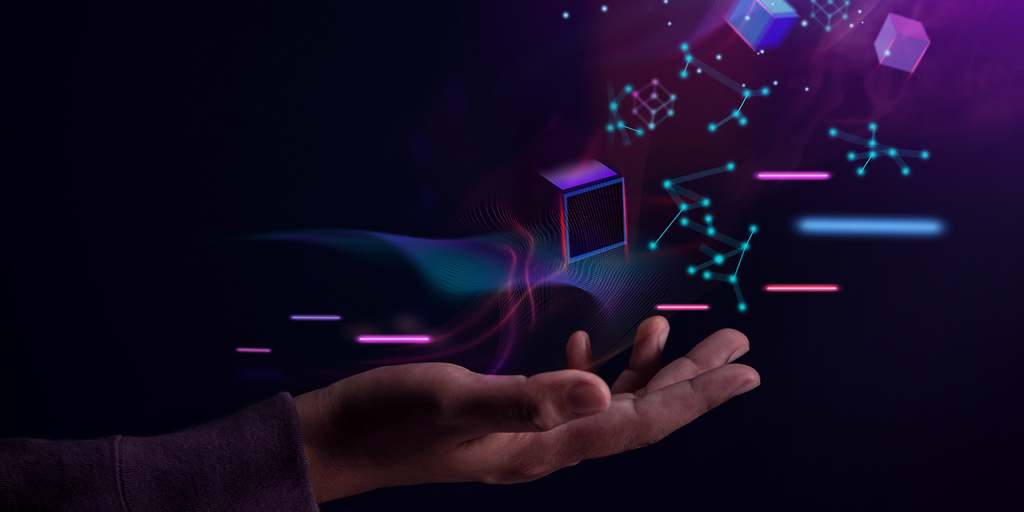Will Blockchain Unlock the Future of Real-Time Contracts?
Blockchain – we all know what it is and how it works right? Wrong. Many people are still confused about what it is. Don’t worry we’ve got your back. Hear from Joanna Martinez who will break it down in simple terms.

Technology moves fast and digital disruptors are here to stay. There is a wealth of digital disruptors that are able to transform our business practices. These include Robotics Process Automation (RPA) which aids with low value, repetitive tasks; Artificial Intelligence and machine learning which help with insight; and blockchain which is a form of record keeping and transacting. In the world of procurement Blockchain offers an exciting future!
Our digital disruptor queen
Joanna Martinez is the founder of Supply Chain Advisors LLC and is a top leader and global influencer in Thinkers360. She is a speaker and Educator on Digitisation, Innovating and Managing Change and has published a top-selling book A Guide to Positive Disruption. The Faculty members had the privilege of attending a Blockchain Masterclass from Joanna where she delivered a world-class presentation on demystifying blockchain and exploring how it can be applied to procurement.
What is Blockchain?
A blockchain is a “secure digital ledger of complete business flows using peer-to-peer networks that rely on smart contracts” Clear? Probably not. Joanna breaks it down into the meaning of ‘block’ and ‘chain’ in the infographic below. A block represents the piece of digital information and the chain refers to how it is transacted, communicated and distributed.
In simple terms, blockchain is like a google doc that’s been encrypted, verified, then shared and there is a logical relationship to each page within the document being created. It creates a collection of relevant records. You can also think of it like a manila folder where each individual piece of paper creates a record.
How is it changing our world?
Blockchain is slowly changing the way items in our lives are transacted. What may seem like a small step represents a big change in the ways that we buy and consume everything in our lives!
Joanna uses the example of online shopping to explain. If you look at a typical purchase that we make on your phone or computer, you visit a website (retailer) and you add items to the cart. They ask you for a bit more information like your address. You make a payment and it’s done.
But in reality, it’s not just you and the retailer. There’s a third party involved: the credit card company. You are completely reliant on the relationship between the retailer and the credit card company to make the transaction work. These intermediaries charge a fee for this service and when we pay our bill the intermediary collects fees on this end too.
In blockchain this all disappears as peer-to-peer computers in the blockchain validate the transaction, the intermediary is eliminated and so are the fees.
How is blockchain used currently and what are the possibilities in the future?
There are many examples of blockchain being used, companies like Venmo, Zelle and even the bank Banco Santander which is using blockchain in their money transfer service.
What else could blockchain be applied to? Everyday interactions in our lives, some big and some small, like going to the doctor: your medical records could be owned by you and you grant access to any medical profession that needs it. Buying a house: you could cut out some of the intermediaries and make it peer-to-peer.
What are the impacts on procurement?
When you start applying the blockchain theory to the world of procurement, the applications are vast. Joanna lists some of the advantages below.
- Smart contracts – contracts could effectively be live and real-time, enabling procurement to be responsive and move with the pace required. The environment would be automated so having tight and regimented contracts would be an absolute; there can’t be any holes. This could revolutionise the procurement world.
- Risk mitigation – blockchain can act as a great audit trail as every related transaction is kept and available within the one record. It would require the right kind of skills to be able to extract the information but once extracted the audit trail would be incredibly robust.
- Cost reduction – there would be cost reduction opportunities as intermediaries wouldn’t be required in a true end-to-end Purchase-to-Pay ecosystem.
- Process improvement – when everyone involved in the transaction has secure access to the same record you can gain efficiencies in the process, it can also show where there are potential bottlenecks holding up the process.
- Reduced counterfeiting – digital products in a secure environment are harder to corrupt and hack.
Blockchain technology has its limitations, however:
- Investment cost – it costs money to set up a blockchain environment.
- Transition cost – moving to blockchain represents a big leap in operating, changing resources, personnel and processes requires careful planning.
- Energy usage – without getting into a bitcoin deep dive, there is a large infrastructure and network required to verify and run blockchain which can increase energy costs.
The conversation around blockchain and other disruptors is hard to contain. There are many related areas, new frontiers to explore and relationships between all the technology types. If you are interested to know more, join The Faculty workshops for more inspiring content like this brilliant and insightful masterclass by Joanna Martinez.